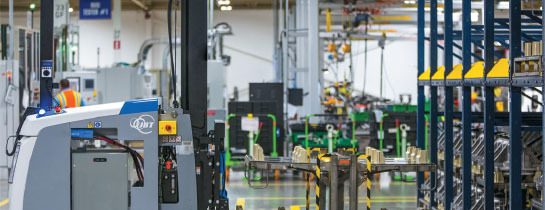How AGV Systems Improve Safety at Material Handling Facilities
Content was pulled from MHI Solutions Magazine Q2.2019
An automatic guided vehicle (AGV) system consists of one or more computer controlled wheel-based load carriers. Typically battery powered, these systems operate on plant or warehouse floors or on paved areas outdoors without onboard human operators. Navigating using pre-defined paths, AGVs provide automated material movement, which can reduce labor and material costs, improve worker safety and reduce product and equipment damage.
When to use AGVs
“The repetitive and consistent handling of loads is where an AGV has most value,” said Carlos Millan of MHI member Oceaneering® AGV Systems. When done by humans, “this task can cause personnel fatigue, errors, damage to goods and safety risks. AGVs can handle loads that are high in weight and are low/high in height, which could otherwise cause ergonomic harm to personnel.” Jayesh Mehta of MHI member Transbotics recommends installing an AGV system in “any situation that would put people into hazardous conditions like dealing with high or low temperatures or handling corrosive or hazardous materials, for long distance material movements and any repetitive functions.” Other good applications include raw material delivery to point-of-use and finished goods movement from the end-of-line to staging or onto trailers, picking things up and moving them to another location without altering them and putting things on racks or on the floor.
Setting up a new AGV system involves mapping the facility where it will be used so the locations and dimensions of aisles, racks and work areas can be added to the AGV system software before assigning work to the system, explained John Clark of MHI member Dematic. Each unit comes with on-board navigational software to operate its sensors along with fleet management software shared with all AGVs in the system.
Read full article in MHI Solutions Magazine





